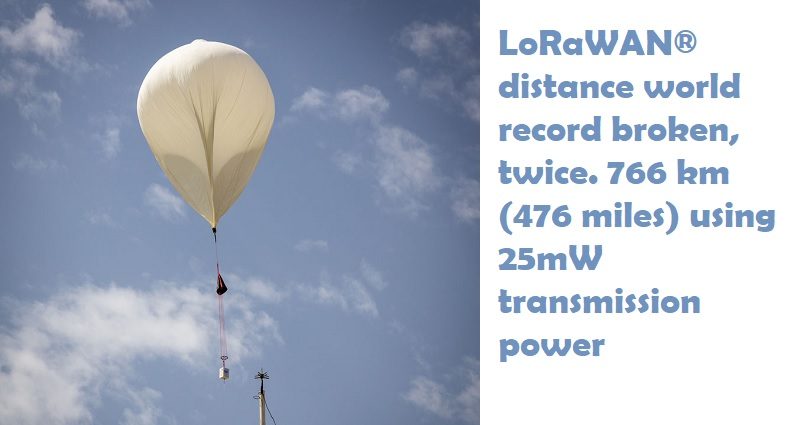LoRaWAN® distance world record broken, twice. 766 km (476 miles) using 25mW transmission power
After almost 2 years, the world record of 702 km (436 miles) has been broken. Not once but twice. For a long time this record which was set on 26th of August 2017, seemed nearly impossible to break, until the Servet IV mission was launched. On 13th of July 2019, the record was broken by 39 km, setting a new record distance of 741 km. Interestingly, this record only held for 5 hours as another new world record was set with an astonishing distance of 766 km (476 miles).
LoRaWAN is a Low Power, Wide Area (LPWA) networking technology, designed for low-powered devices to communicate with Internet-connected application over long range wireless connections using the unlicensed ISM radio bands. The LoRaWAN protocols are defined by the LoRa Alliance and formalized in the LoRaWAN Specification which can be downloaded on the LoRa Alliance website. The Things Network runs the world’s largest open LoRaWAN network, currently available in over 100 countries around the world.
World Record Breaker 1 – 741 km
The probe named PaPe I, built by Jose Manuel Cuesta, was developed with only one goal in mind. This had to be accomplished by using three directional 3D printed Moxon Antennas placed at 120º and a reaction wheel (a type of flywheel used primarily by spacecraft for altitude control) to stabilize the probe and to prevent it from spinning. It is crucial to keep the probe from spinning as LoRaWAN transmissions using high Spreading Factors can take up about a second.
Each antenna had its own transmitter. The first antenna was connected to an ESP32 microcontroller with an RFM95W LoRa module, the second with an ESP8266 and RFM95W, the last one with an ASME Lion SOM based on Atmel D21. The structure of the probe is 3D printed. It’s a modular design made in FreeCAD. (Source files can be found on GitHub).
World Record Breaker 2 – 766 km
At the same time Diana I, a small probe made by Enrique Torres from the computer architecture research group of the University of Zaragoza, was aimed at reaching the highest possible altitude (>40 000m). For doing so, the balloon’s lift and capsule weight were optimized up to the grams. The climb was going to take extremely long (over 10 hours), and the route was likely to be very long, creating a high risk of losing the probe completely. The device was realized with a TTGO node with LoRa module because of its price (€17), availability, weight and low power consumption.
Read Full news at https://www.thethingsnetwork.org/article/lorawan-distance-world-record
Source: TheThings Network
I hope you like this post. Do you have any questions? Leave a comment down below!
Thanks for reading. If you like this post probably you might like my next ones, so please support me by subscribing my blog.
Recommended:




